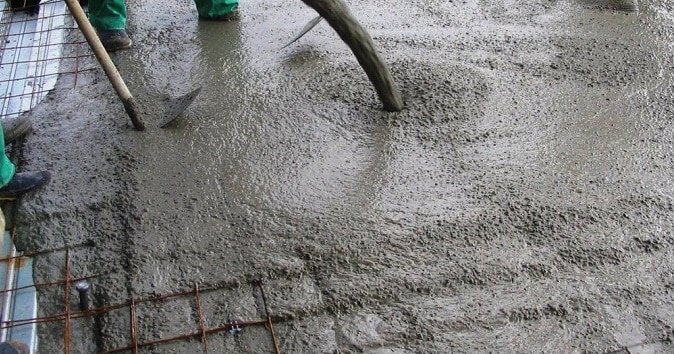Experts and activists at the Architecture of Emergency climate summit in London have called upon architects to fight climate change by ditching concrete. “If you came here with the hope of one clear action for what you can do in the office tomorrow – stop it with the concrete,” said Maria Smith, founder of architecture studio Interrobang, who gave a keynote speech. “We don’t have to wait to solve every single problem in order to start something today.”
Over 10 speakers took to the stage at the Barbican to give short presentations and join a panel discussion asking how the architecture industry can respond to climate change. Architecture Foundation Deputy Director and Dezeen columnist Phineas Harper said the summit was the “largest gathering of architects to discuss climate change in the UK”.
Concrete a major carbon emissions culprit
The four billion tonnes of cement produced each year for concrete construction accounts for eight per cent of the total global carbon dioxide emissions.
“If we invented concrete today, nobody would think it was a good idea,” said Michael Ramage, an architectural engineer and University of Cambridge academic.
“We’ve got this liquid and you need special trucks, and it takes two weeks to get hard. And it doesn’t even work if you don’t put steel in it,” he added, suggesting timber is a much more environmentally sound alternative. “We have an incredible industry that produces concrete and rebar. We don’t have that infrastructure for trees anymore.”
“We don’t have 50 years”
As concrete buildings can last a long time they can have low levels of embodied energy over their lifetimes.
However, these buildings that release a large amount of carbon during the building process meaning that they shouldn’t be considered sustainable argued Andrew Waugh, co-founder of Waugh Thistleton.
“If you build a building now it’s in 50 years time when the carbon is measured from that building,” he continued. “We don’t have 50 years.”
Targets could be met with timber
In order to meet the EU’s target of cutting emissions by 40% for 2030, even sustainably-rated concrete buildings are hindering progress. The only material that has a lower embodied energy level is timber, which locks in the carbon it transforms into oxygen as the plant grows.
Encouraging architects to switch to timber-framed buildings has rattled the cement and concrete industry, which has taken out adverts warning about the supposed dangers of timber buildings.
“We must be doing something right because, much like the tobacco industry in the 1980s and 1990s, Big Concrete is beginning to fight back,” added Waugh.
Waugh Thistleton Architects has been pioneering housing developments built using cross-laminated timber frames, and experimenting with methods of high-rise timber construction.
“We must fundamentally shift our model”
Even with the housing crisis being faced by the UK, concrete should not be used as a short-term solution agreed Louise Wyman of Homes England. “We’ve got to move away from cement,” she said.
Along with calls to end building with concrete, the summit speakers called for a radical overhaul of the systems that cause environmental damage while enriching the richest one per cent.
“Incrementalism is dead,” said Greenpeace activist Danielle Paffard. “There’s no time for fannying around the edges.”
“We must fundamentally shift our model for all relationships, from one of domination towards a model based on sharing on co-operation,” concluded Smith. “Substitution is not enough – we must think and act differently.”



